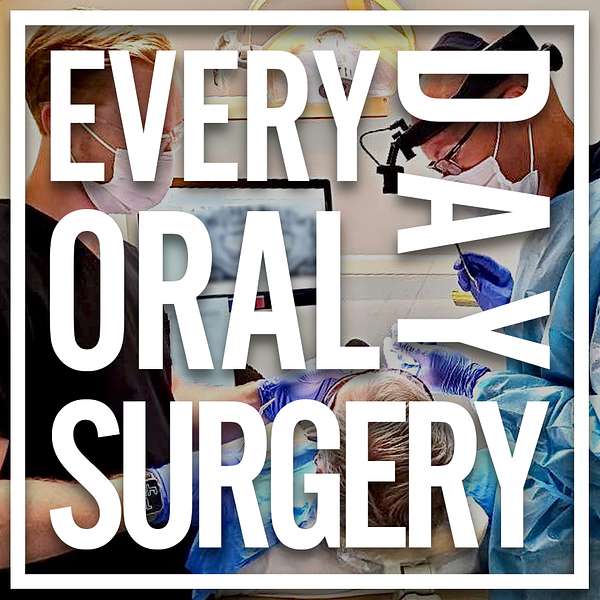
Everyday Oral Surgery
Everyday Oral Surgery
Dr. Robert Bosack: 3 Essential Steps in Handling Airway Emergencies in the Office
Oral and maxillofacial surgeons are currently able to sedate patients and operate on them, although that privilege is under threat due to safety concerns. Dr. Robert Bosack, who has been a surgeon since before Mellampati scores were invented, is passionate about enhancing safety protocols for surgeons in order to preserve the right to anaesthetize and operate, and of course, to ensure minimal tragedy takes place in theatre. Problems can occur from the moment a patient is sedated until after they have walked out of surgery, and in today’s episode you’ll hear stories about a wide variety of potential issues. More importantly, you’ll hear about how to prevent these from occurring, and what to do if you run into serious trouble. Robert also shares a variety of resources where you can vastly broaden your scope of knowledge on safety in the operating room, including many that he has created himself.
Key Points From This Episode:
- What the world of oral surgery was like when Robert graduated.
- How Robert’s practice is structured.
- Why Robert encourages all oral and maxillofacial surgeons to join the American Dental Society of Anaesthesiology.
- The model that oral and maxillofacial surgeons use for operating is under scrutiny.
- How Robert thinks safety should be measured.
- Dental Patient Safety Foundation; what this organization, that Robert co-founded, does.
- The value of role play in improving safety in surgery.
- Where you can access online training programs for surgery safety.
- How surgeons are taught to deal with impending airway obstructions, and the problem with this.
- Complications that occur in surgery due to human factor engineering.
- 6 characteristics of people who are likely to have a tough airway.
- SSSR: Simple, Shared, Structured Responses, and an example of how these can play out in surgery.
- The importance of building relationships with paramedics.
- Airway management’s golden rule.
- How to test your patient’s level of sedation and understand whether or not they are in danger.
- Some of the challenges that surgeons can run into while their patient is sedated.
- Robert’s airway algorithm.
- When to call 911, and why you should never feel shame in doing so.
- Post-surgery reactions that patients may experience.
- The strategy Robert uses to connect with his patients.
- What you can expect to learn from the talk Robert is giving at the ADSA Chicago conference.
Links Mentioned in Today’s Episode:
Dr. Robert Bosack — https://www.linkedin.com/in/robert-bosack-8473ab24/
Anaesthetic Complications in the Dental Office by Robert Bosack — https://www.amazon.com/Anesthetic-Complications-Dental-Office-Prevention/dp/0867154489
Dental Patient Safety Foundation — https://www.dentalpatientsafety.org/
Dental Anaesthesia Online — https://www.daoce.org/
ADSA Chicago — https://www.adsahome.org/chicago
Dr. Grant Stucki Email — grantstucki@gmail.com
Dr. Grant Stucki Phone — 720 441 6059